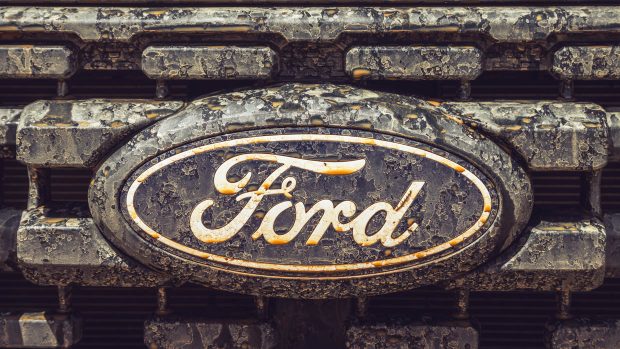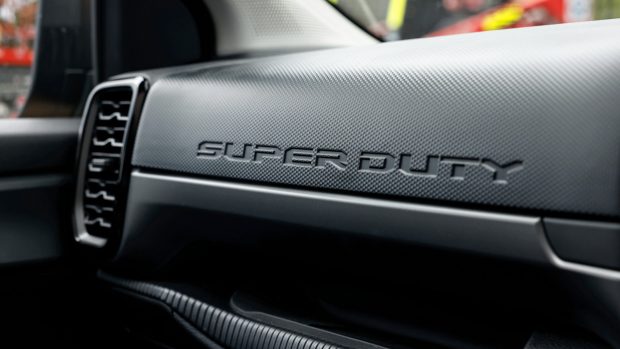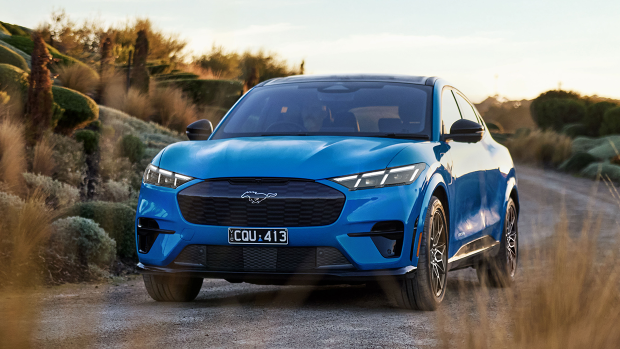-
Car Reviews
- All reviews
- Midsize SUVs
- Small cars
- Utes
- Small SUVs
- Large SUVs
- Large cars
- Sports SUVs
- Sports cars
- Vans
Latest reviews
- Car News
-
Car Comparisons
Latest comparisons
- Chasing Deals
Regulatory sweet spot sees Ranger Duty sit just above NVES threshold, dodging emissions penalties without dragging buyers into heavy-vehicle compliance territory
Australian federal government approval documents show that the Ford Ranger Super Duty has a statutory exemption from the Albanese government’s New Vehicle Emissions Standard (NVES) — the new laws designed to push carmakers towards selling more EVs and plug-in hybrids in Australia.
The Super Duty’s exemption appears set to save Ford Australia well over $150 million in avoided NVES penalties for 2026 alone — and even more in 2027 — compared to a scenario in which the beefed-up Ranger derivative counted toward Ford’s NVES result, though the true dollar figure would vary based on sales volume and emissions factors.
The exemption stems from the Ranger Super Duty’s 4500kg gross vehicle mass (GVM), which places the ute outside the scope of NVES. The scheme applies only to new cars, SUVs and light commercial vehicles up to 4500kg GVM. Anything at or above that threshold is not included in a carmaker’s NVES fleet-average CO2 calculation.
A Ford Australia spokesperson confirmed the NVES exemption and said that “the GVM and GCM targets for [Super Duty] were set around five years before consultation on an emissions framework began”.
The upshot: the Super Duty does not count in Ford’s NVES result at all, and every Ranger buyer who chooses a Super Duty instead of a ‘standard’ Ranger, or Ranger Raptor, effectively lowers Ford’s future NVES bill.
Ford says that outcome is coincidental, with a spokesperson telling Chasing Cars that “NVES had no influence on the design and development of this vehicle”.
Ford Australia appears to have homologated the Ranger Super Duty at exactly 4500kg GVM and not a kilogram more, because exceeding that line would generally have shifted the ute into Australia’s heavy vehicle class.
A spokesperson for the carmaker told Chasing Cars that, instead of seeking to avoid NVES, the Ranger’s precise 4500kg GVM was defined to avoid onerous heavy vehicle operator requirements that kick in at 4501kg GVM — including stricter driver licensing, parking, insurance and registration rules, plus a blood alcohol limit of zero.
Rival carmakers such as Ram and Chevrolet have long offered heavy-duty American pick-ups in Australia with GVMs above 4500kg — making them NVES-exempt while pushing those vehicles into NB2 ‘heavy truck’ territory.
Ford’s approach to the Ranger Super Duty’s GVM is more surgical, with government registers that confirm the Ranger Super Duty’s NVES exemption also show the Ford is classified as an NB1 medium goods vehicle rather than an NB2 heavy truck.
The Super Duty’s NB1 status means the Super Duty can likely be driven on a regular Class C license in most states, and does not automatically incur a full suite of heavy vehicle compliance obligations, though commercial operators may still trigger these requirements.
The development is a major win for Ford Australia, which otherwise faces substantial NVES penalties due to the brand’s sales mix: large volumes of Ranger, Everest, F-150 and Mustang models, and comparatively low sales of BEVs and PHEVs.
The Super Duty exemption gives Ford an incentive to steer buyers into the NVES-excluded model, or into the Ranger PHEV, which is not exempt but carries dramatically lower CO2 figures than the diesel and petrol versions of the ute.
A Ford Australia spokesperson said the brand was confident that the Super Duty would “prove very popular with customers”, but said that “most of Ranger Super Duty volume will be incremental” — meaning customers pinched from other car brands.
Chasing Cars modelling of Ford’s potential NVES saving is based on future Ranger volume levels remaining at around 60,000 sales, but with 10 percent of Ranger customers opting for the Super Duty, 10 percent for the Ranger plug-in hybrid (PHEV), and retention of 15 percent demand for the Raptor.
A spokesperson for the Ford would not be drawn on volume expectations for the Super Duty.
Ford achieves a similar NVES result if it shifts Aussie Ranger customers into the PHEV version of the Ranger, which has emissions well below NVES limits.
Ford’s decision to import both an NVES-exempt Super Duty and an NVES-compliant Ranger PHEV appears to form part of a strategy to shore up its position under the new emissions regime, and one quite unlike that employed by any other carmaker.
Archrival Toyota sells plenty of hybrid SUVs and cars, but its popular Hilux ute has no PHEV variant though it is introducing a BEV version in 2026.
In 2024, Ford sold 63,356 Rangers, 26,494 Everests and 2428 F-150s — nearly all diesel and petrol powered. By contrast, Ford delivered only 673 examples of the Mustang Mach-E in 2024, and even fewer so far in 2025.
Without a meaningful increase in its EV and PHEV sales mix, Ford’s 2026 NVES penalty could reach approximately $275 million based on where volume and emissions profiles currently sit, with no extra investment in BEVs and PHEVs for Australia.
However, excluding the Super Duty from Ford’s 2026 NVES fleet average — and assuming all other key factors remain unchanged — reduces a hypothetical penalty to roughly $120 million.
Carmakers can balance any NVES penalties out by selling more BEVs and PHEVs, or by purchasing NVES credits ‘second hand’ from compliant manufacturers like Tesla, Polestar and BYD, if they are willing to sell.
If a manufacturer does neither of those things, it can choose to settle the bill for its NVES penalty without fighting it in court, in return for a 50 percent discount on the penalty.
For Ford customers, the upside of the Super Duty’s NVES exemption is straightforward: Ford faces less pressure to raise prices to fund penalty payments, emissions credit purchases, or margin sacrifices to shift more volume of its BEV and PHEV lineup in Australia.
Ford Australia has previously admitted prices of its Mustang sports car have been increased in response to NVES.
Without the Super Duty exemption, a 50 percent discounted NVES penalty of roughly $137 million in 2026 could require a $2000 price increase per Ford vehicle sold to recover.
However, with the Super Duty excluded from NVES calculations, the relevant $60 million discounted NVES penalty could be covered by an estimated $890 price increase per vehicle.
Either way, Ford Australia will likely explore further strategies to manage its NVES position.
That could include implementing a new plan to grow Mustang Mach-E BEV volume in Australia, improving sales of the E-Transit Custom BEV and Transit Custom PHEV, or introducing new and more appealing hybrid or electric models to reduce overall CO2.
Latest news
About Chasing cars
Chasing Cars reviews are 100% independent.
Because we are powered by Budget Direct Insurance, we don’t receive advertising or sales revenue from car manufacturers.
We’re truly independent – giving you Australia’s best car reviews.






